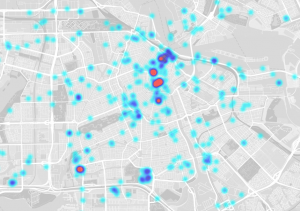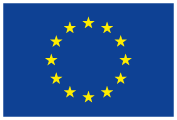Performative mapping can be a powerful way to engage with ‘the other’. The workshop MAPPING INVISIBILITY ‘visualised’ undocumented citizens’ experience of and hiding strategies in the public spaces of Amsterdam. As part of the thematic program Out of State*, Naomi Bueno de Mesquita (TRADERS researcher at Design Academy Eindhoven) presented MAPPING INVISIBILITY on January 20th 2015. It aimed to open the debate about the current policy regarding the presence of people without the right papers, and that of a steadily growing shadow society (the scenography of sheltering and looking away).
In the workshop (which took place a week prior to the presentation) a number of illegal immigrants (experts in living invisibly in the city) guided participants to places in the city with an emotion in mind (a total of four emotions were mapped). Prior to the fieldwork a legend was generated by the participants, consisting of emotions that they thought undocumented citizens experience in the city. While walking/ mapping the participant could evaluate preconceived ideas (to what extent the chosen words matched reality or not) in the dialogue with the undocumented. Changing from one emotion to another happened at a fixed time and for all cartographers simultaneously, until all the words of the legend were mapped. The guests rediscovered the diverse meaning and associations of public places and were introduces to strategies of hiding, such as avoiding to walk with a bag, pretending to be waiting for a train, etc.



